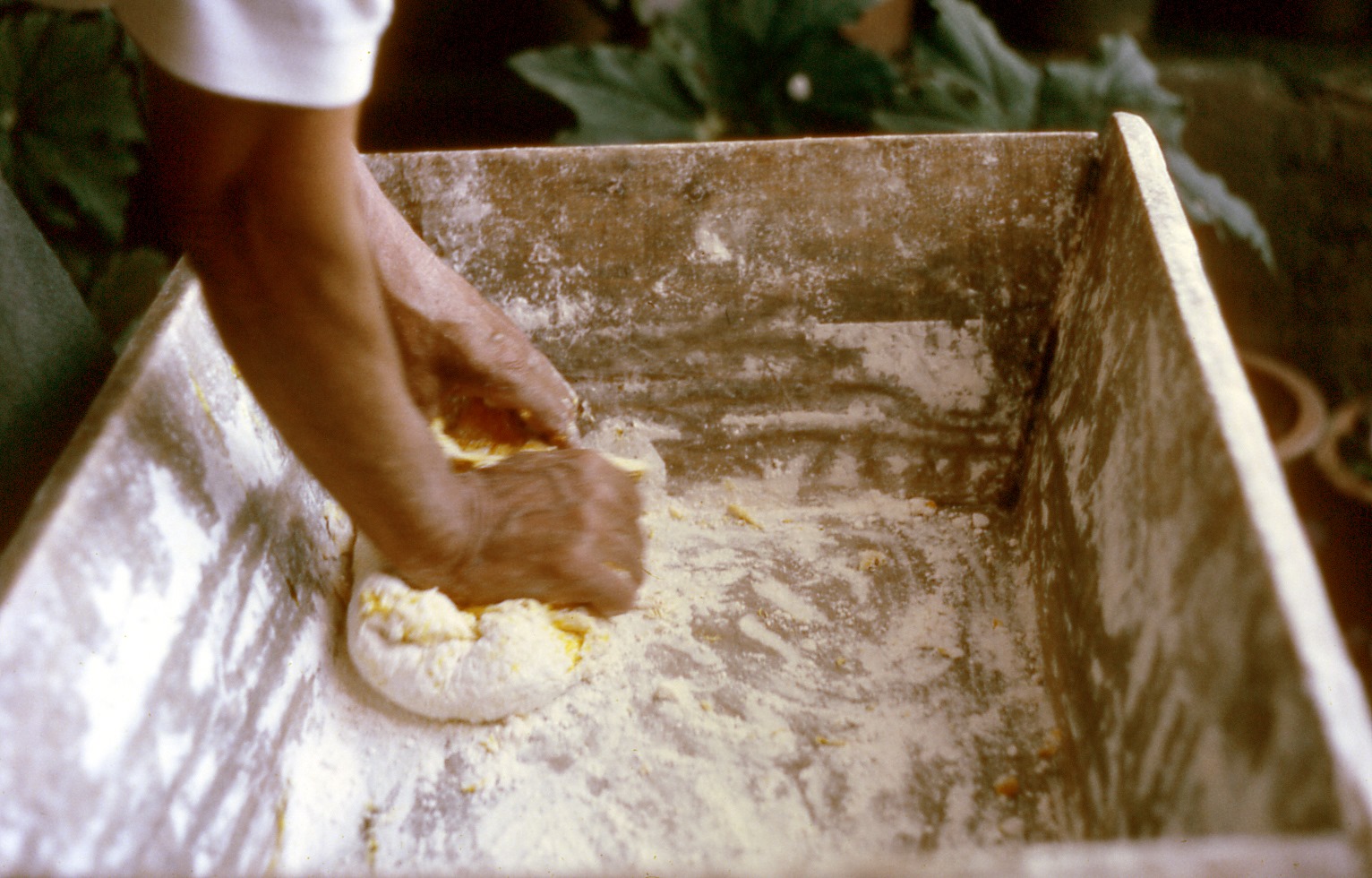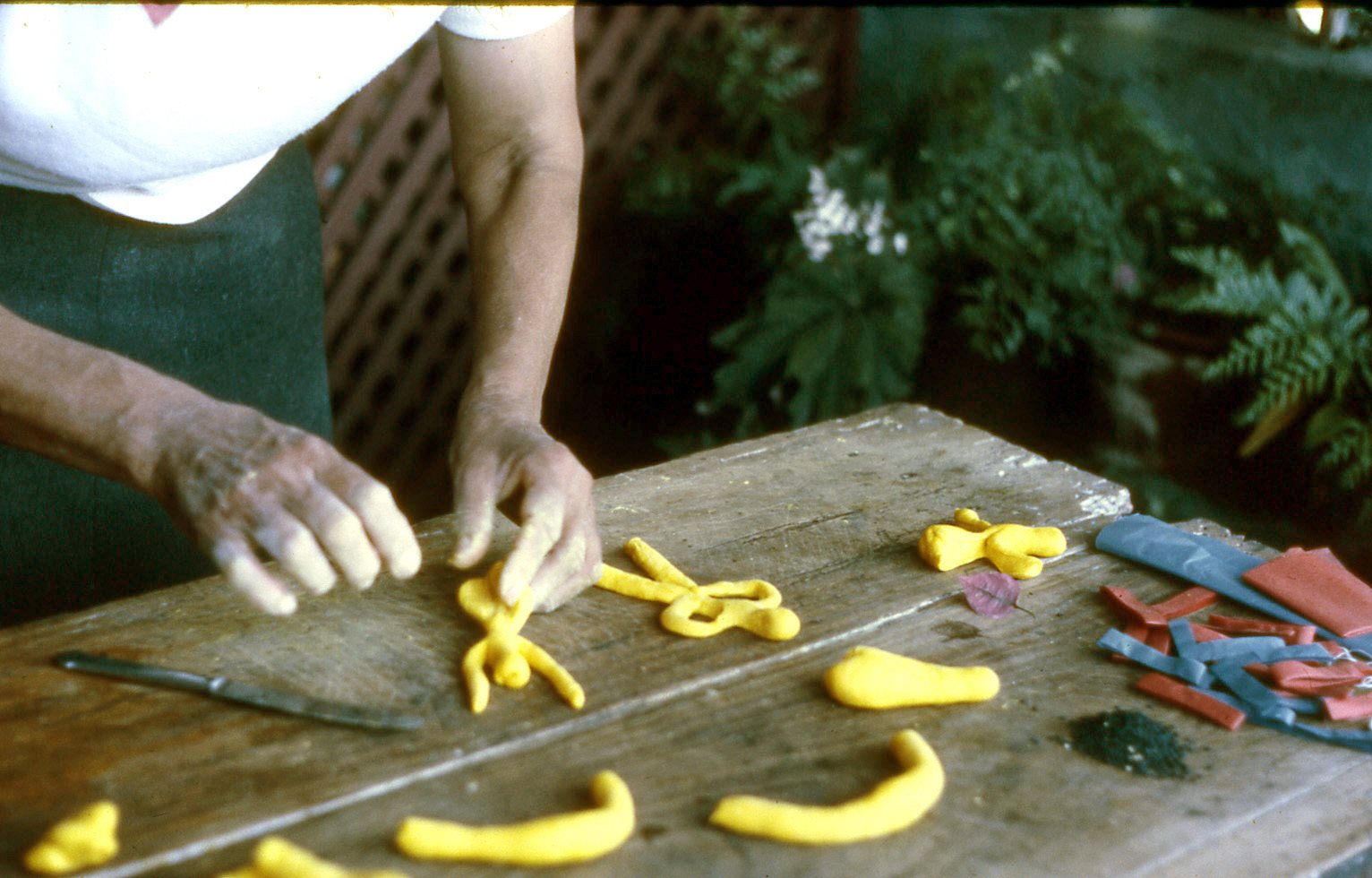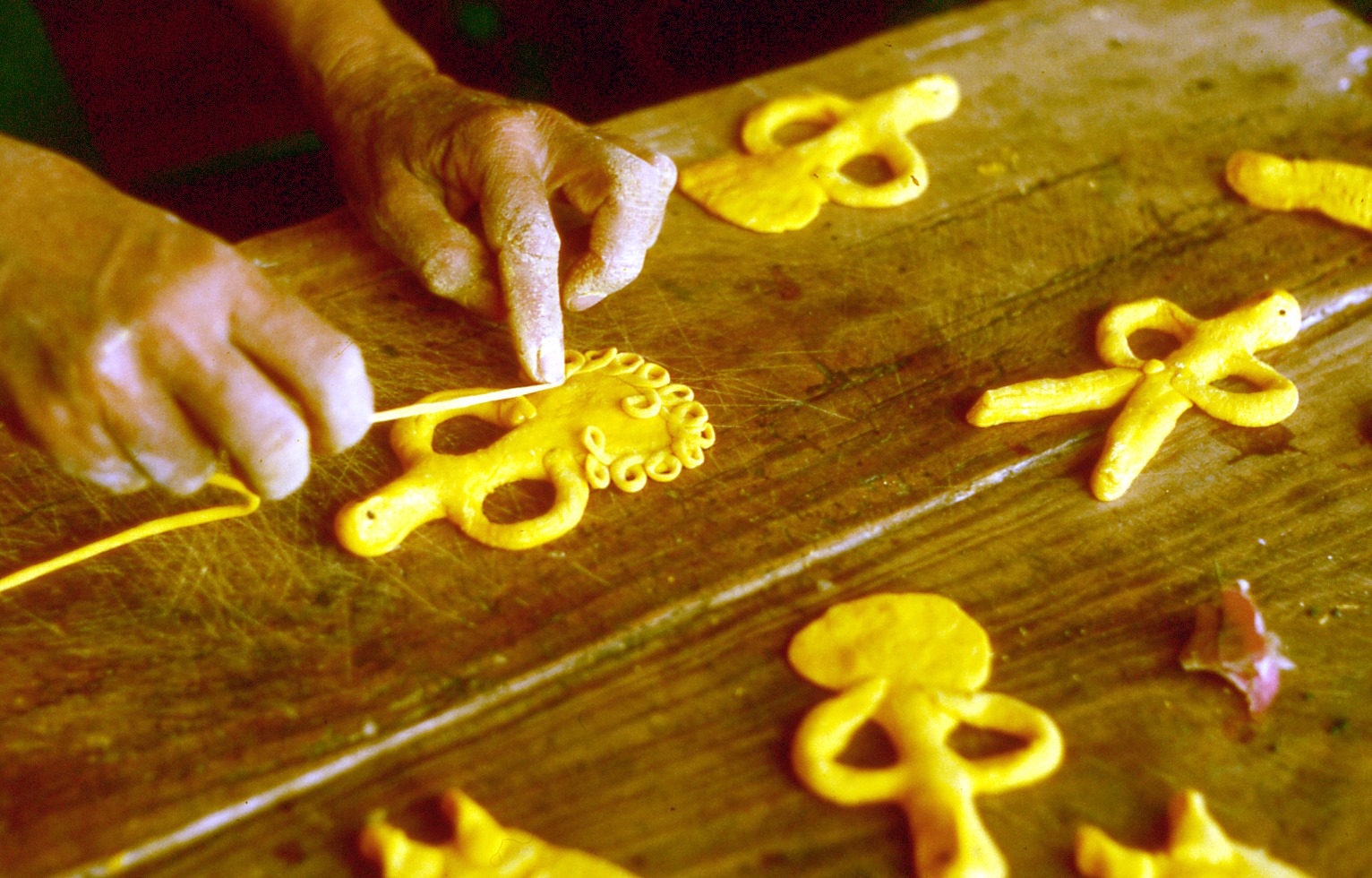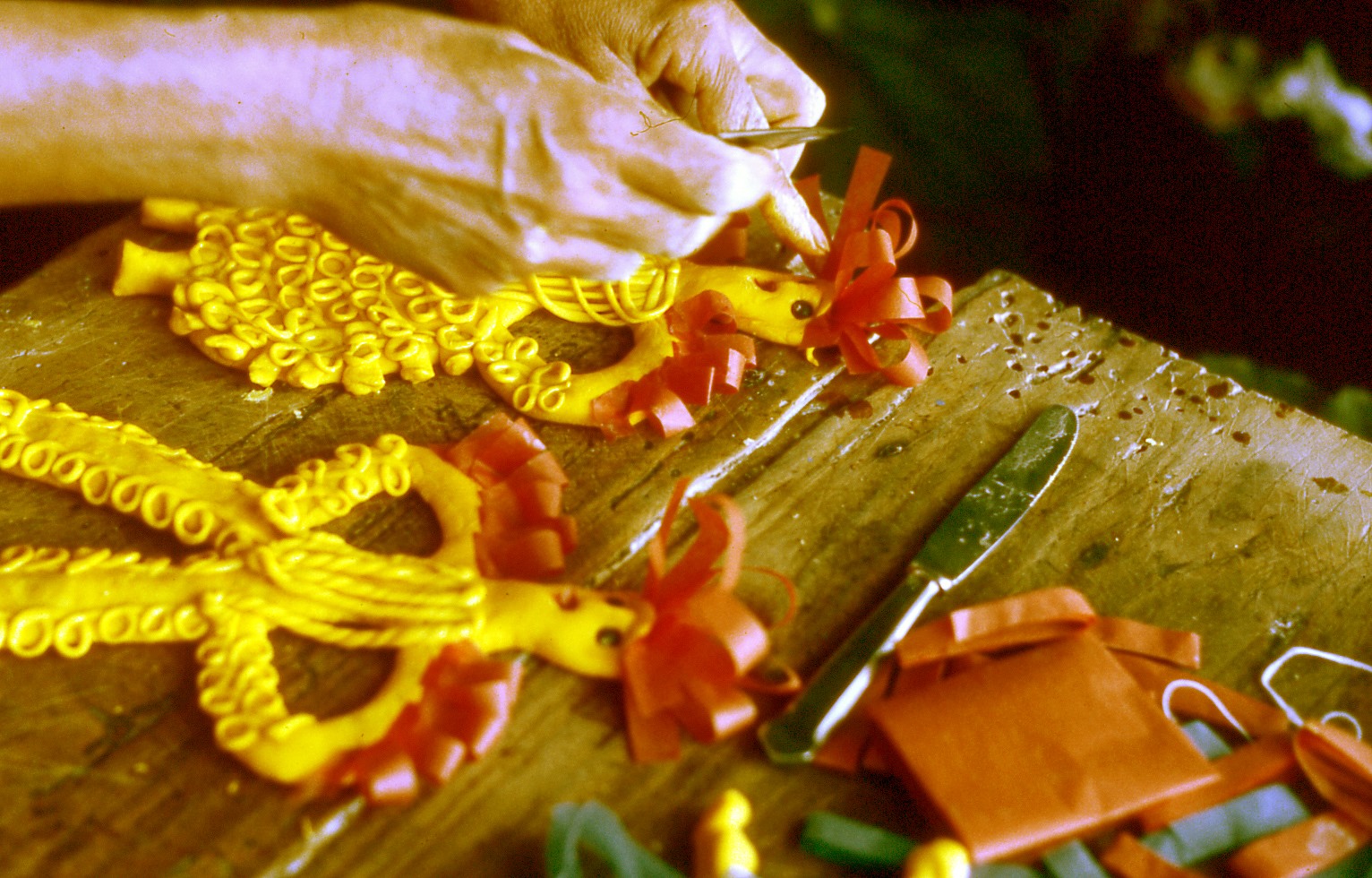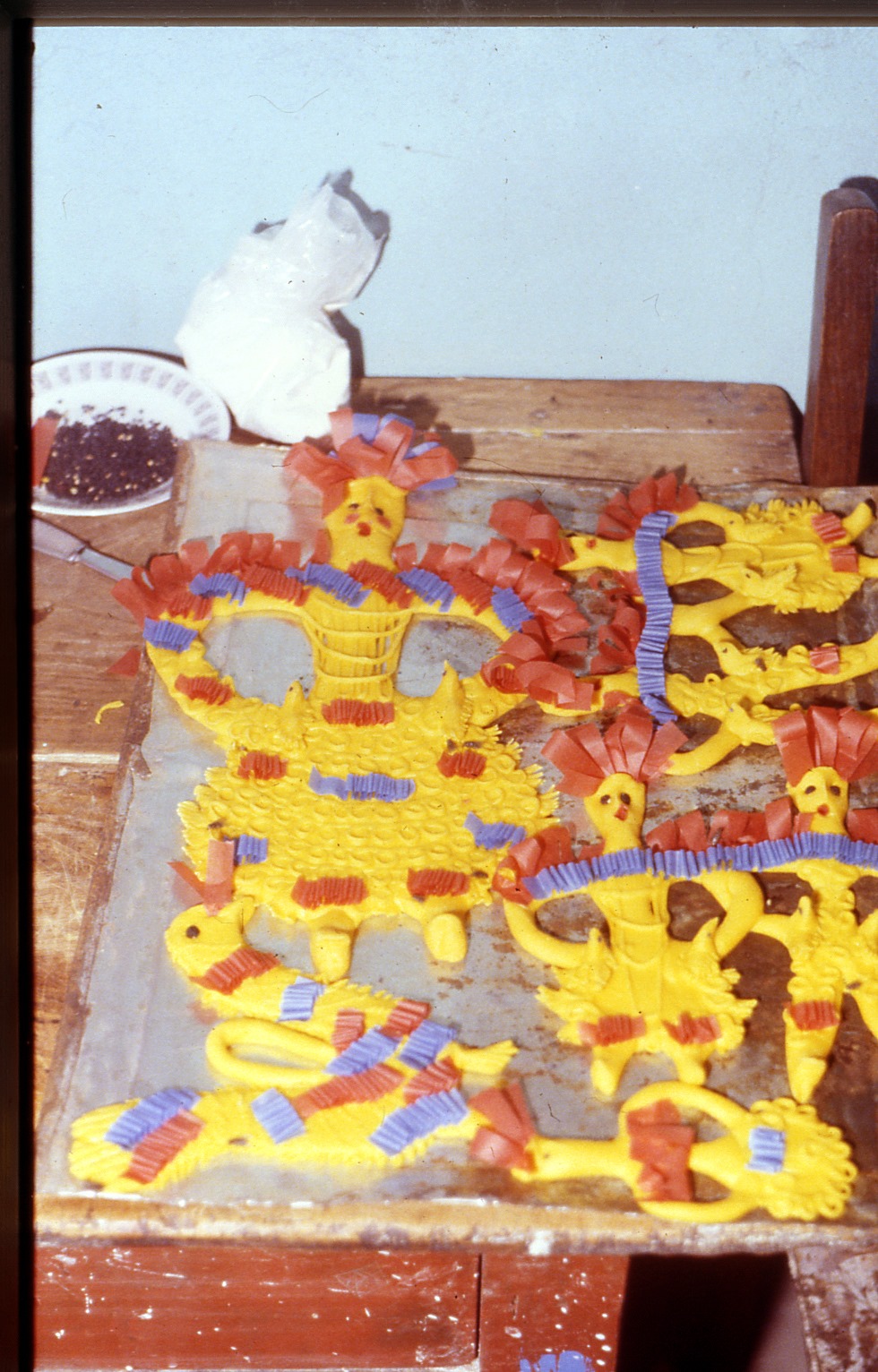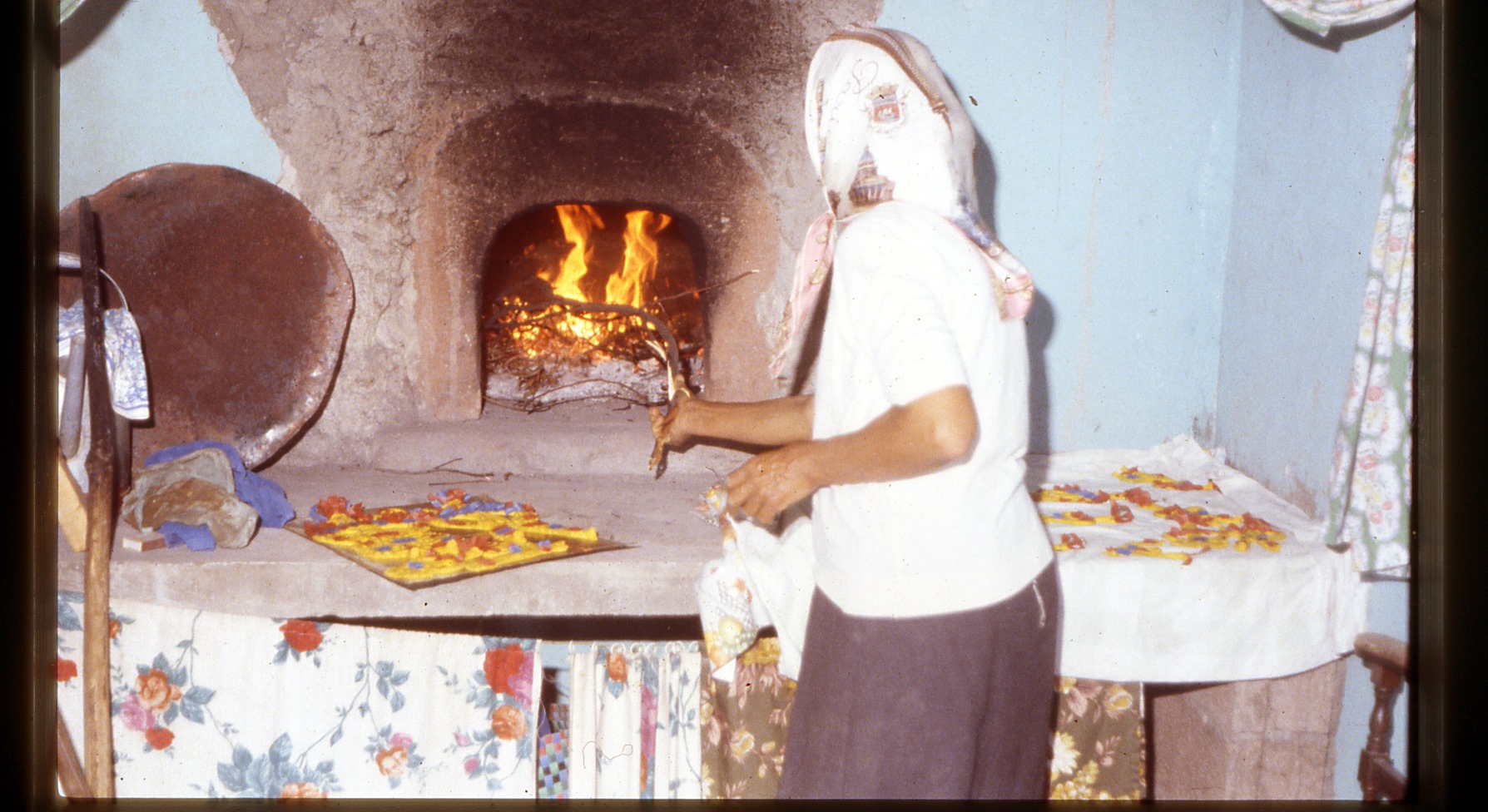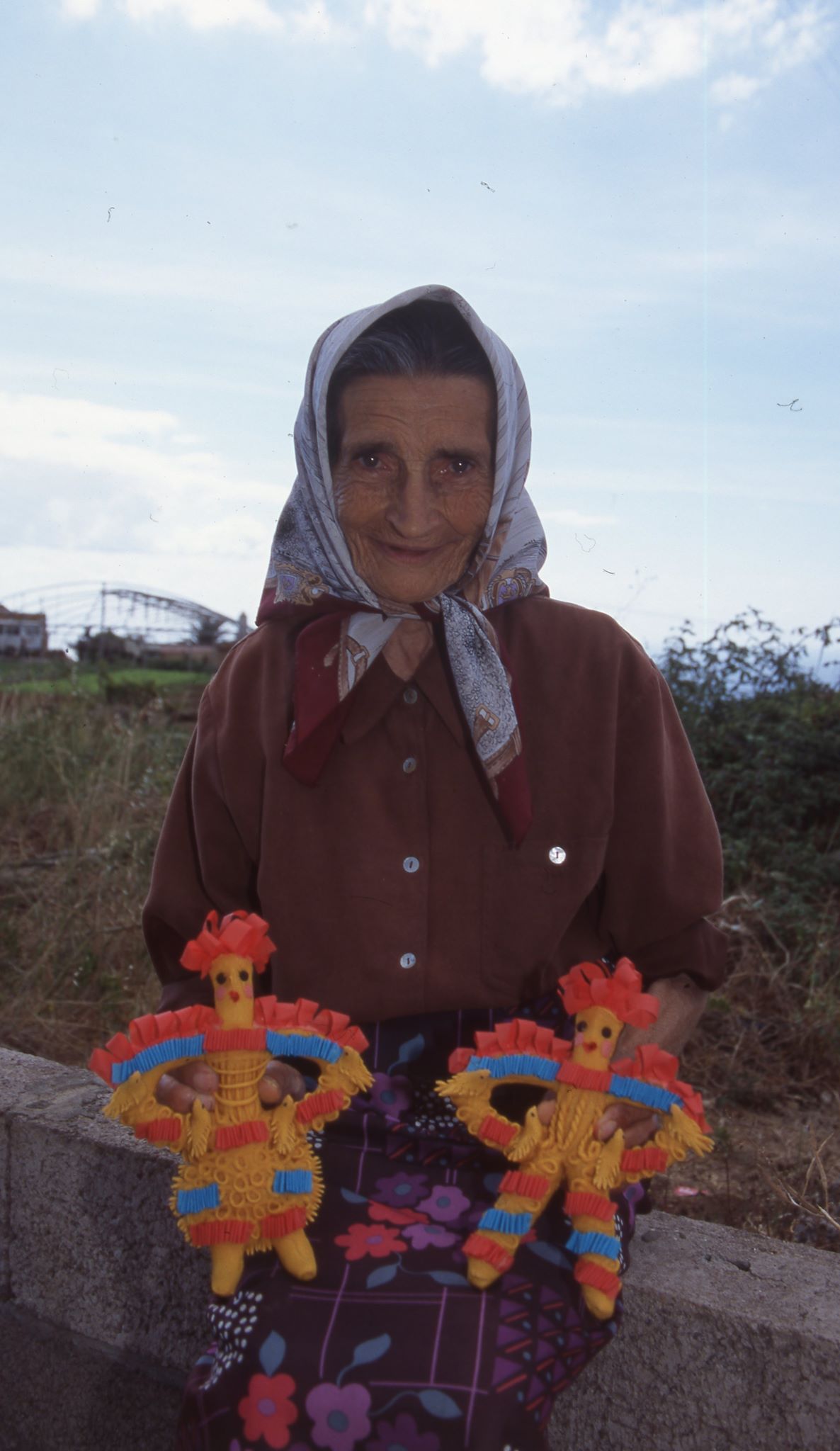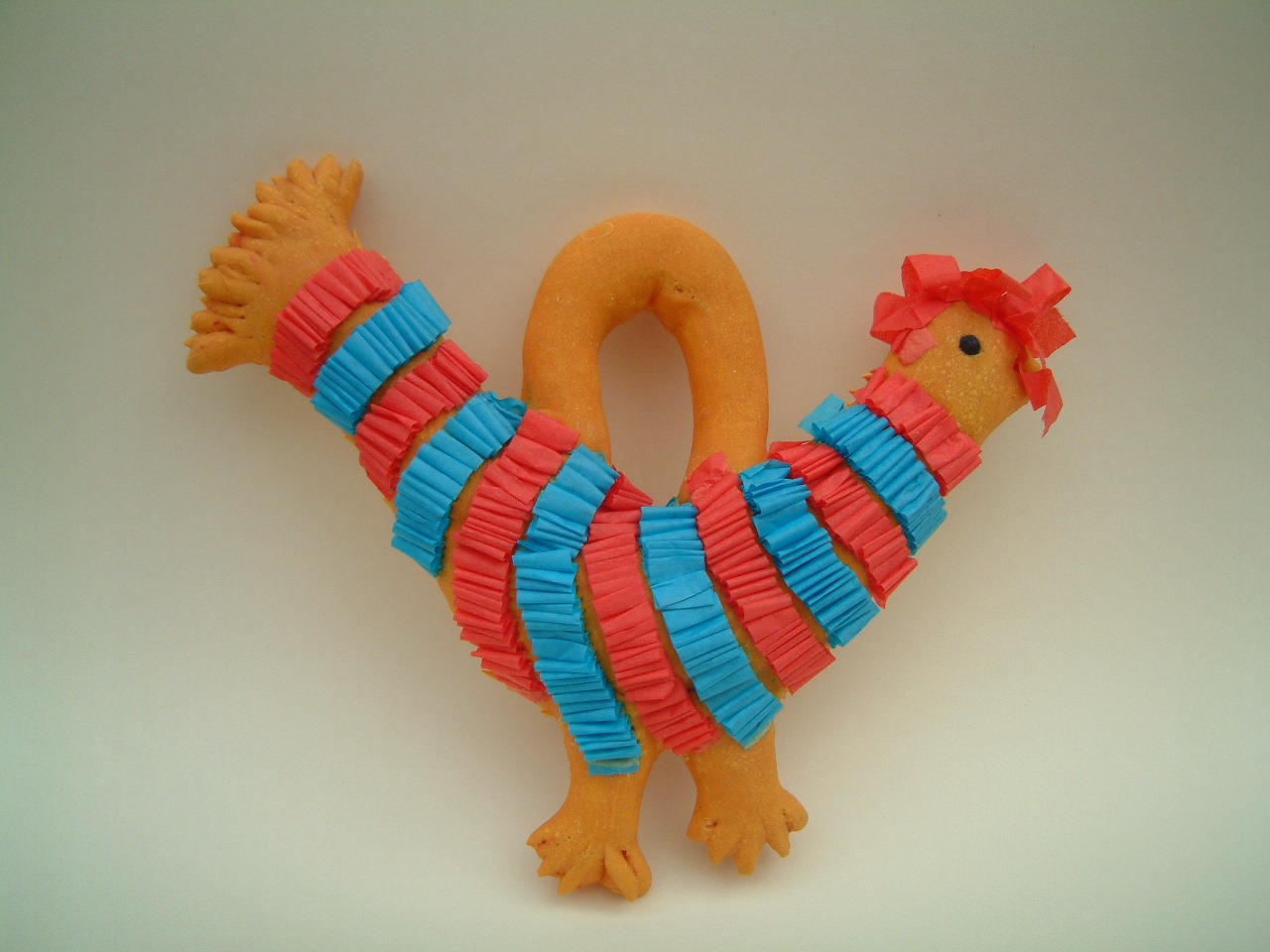The doll couple symbolizes union and, therefore, fertility. Mandatory presence in the festivals, these figures were displayed by pilgrims, being put on hats, hanging on candy necklaces or carried in the hand by children and adults. The use of ritual figures modeled on dough goes back to antiquity. Usually associated with fertility rituals, the cult of the dead or agricultural rituals, related to the regeneration and protection of sowing, these “edible dolls” occupy a very specific place between sweets and figurative breads, having their manufacture been very common in the Middle Ages.
In Portugal along with the conventual sweets, widely spread since the 16th century, there was also another one, of a profane character, sold on the pilgrimages by street vendors, which included various types of sweets and bread, whose morphology varied from region to region. Their forms ranged from anthropomorphic figures, to figures related to flora and fauna or inspired by popular motives, namely the heart, a symbol deeply rooted in Portuguese culture. The origin of this marzipan figurine sold in our archipelago, at the time of the Pilgrimages, in so-called “arraiais”, is unknown. It is, however, likely that it was introduced by the first settlers and has transformed itself, over time, by the hands and creativity of our craftsmen, distinguishing itself by its original shapes and colors. The figures produced are morphologically varied and have different dimensions: the couple, inspired by the human female and male figure, a symbol of fertility and fecundity, the rooster, which symbolizes vigilance and work and is related to ancestral cults of protection against the disease, the bracelets or rings, symbols of eternal return and eternity and the baskets. Salomé Teixeira, a native of “Sítio da Mãe de Deus”, parish of Caniço, municipality of Santa Cruz, devoted his entire life to the production of these artefacts, having learned the craft from his mother. The Ethnographic Museum of Madeira has a collection of this figurine by this craftsman. This artisanal activity has survived, in this family, for several generations. D. Ludovina, a cousin of this craftsman, and her three daughters, Felicidade, Glória and Trindade, born in “Sítio dos Barreiros”, in the same parish, also dedicated themselves for many years to this craft. All the stages of manufacture required a lot of skill, acquired over many years of learning with the family: it was necessary to prepare the dough, to tend it, to model the figures, to ornament and to bake them. The raw materials used in these artefacts were flour, water and yeast to make the dough, egg dye to give them color, blue and red tissue paper to decorate the figures and seeds, namely “garden banana” or “chives ”, To put in the eyes of the dolls and birds. These elements have remained until today, asserting themselves almost as a "symbol" of these festivities and occupying a prominent place in our traditional handicrafts, which can be considered one of the most interesting uses of cereals in Madeira's artisanal production.
Crafter: Salomé Teixeira, Caniço, Santa Cruz
Photography: Jorge Freitas Branco, Florêncio Pereira.
Colection: Museu Etnográfico da Madeira
